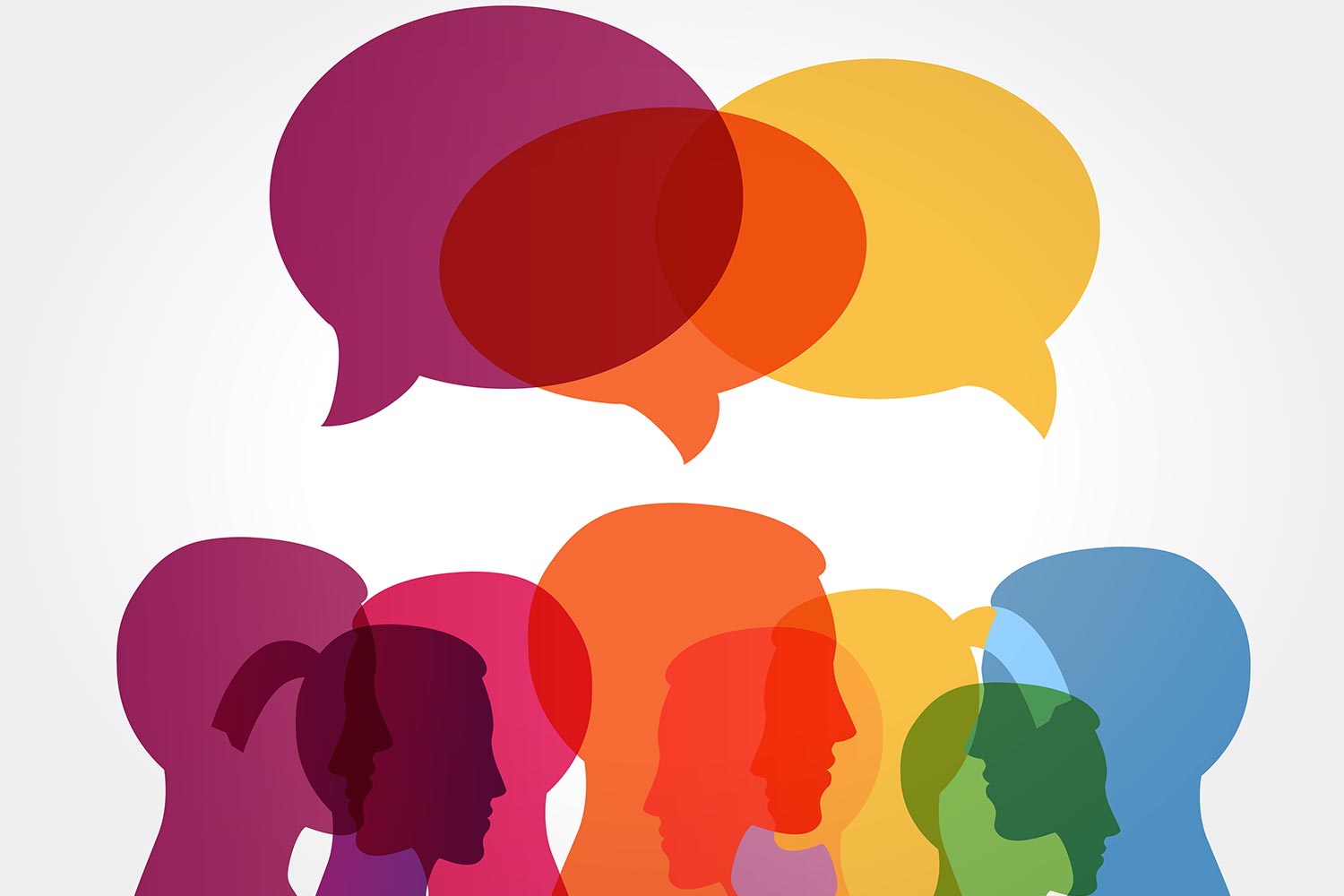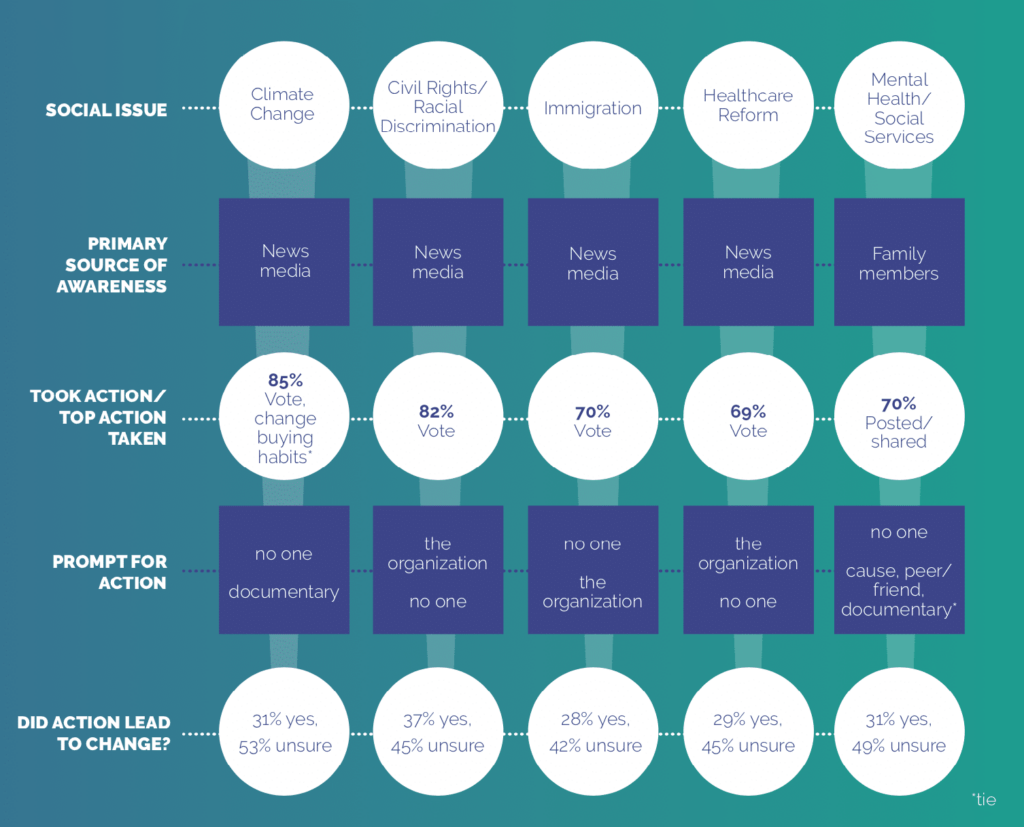Moving Beyond Awareness
How do you become part of young American’s moments? Leverage these four ideas to increase awareness of your issue among millennials!

Engaging young people means fighting alongside them, not out in front of them.
So many causes ask me the same question:
How do we build awareness about our issue among young Americans?
In the conversations that follow, I often help nonprofits refine their thinking to focus on an even more important consideration:
How can your issue become a part of young Americans’ moments, conversations, and dialogue?
In repositioning the question, you will discover that your challenge is not increasing awareness, but rather making your issue part of their generation’s conversation. Once that happens, awareness and engagement follow naturally.
This is an important distinction as you think about strategies to build awareness and involvement based on your expectations of how young Americans behave.
What We Know
Let’s first take a look at a few things we know from research on influence, young Americans, and social issues.
The data tells us that both Gen Z and Millennials become aware of social issues from friends and close peers that share content from news sources. Yep, regardless of where you live, news sources are part of today’s local and national social and cultural moments. And moments are the focal points that enable movements.
Here’s an example: Americans were inundated with media coverage (including online) of Greta Thunberg’s sail to the Climate Change Summit in 2018, and again later that year with the release of a United Nations report on the impacts of global warming by 1.5ºC. Although it was certainly already a high priority, in 2019 climate change became the top social issue of concern for young Americans.
We conducted a robust survey of our own to look at this connection, as well as how young people typically get involved in a range of other popular causes, which delivered some helpful insights:

Source: Influencing Young America to Act 2019
The prominence given to climate change by this extensive news coverage resulted in action by 85% of respondents to our survey. As you can see, news sources influence young people to act on issues more than anything else, such as celebrities, family members, or advertisements (either online or off). They are influenced by news sources, both directly through those sources’ social posts and broadcasts and indirectly through social sharing among peer networks.
What We Can Do
Now that we know young Americans become aware and are prompted to act via content shared by peers from news sources, the question then becomes:
How can your issue become part of today’s moments and shared among young Americans’ peers?
In your strategies to build moments that drive awareness and action among young Americans, consider the following four audience traits and how to refine your approach to address them:
1. Young Americans are Tied to Social and Cultural Moments… Is Your Issue?
We define a “moment” as a brief concentration of actions fueled by a cultural, political, or social event that yields a surge of participation among individuals. Think Harvey Weinstein leading to #MeToo. As you can see from the research, it is the moments that earn the most media coverage that drive issue awareness, to which young Americans and others respond.
As a cause trying to build awareness, therefore, you need to understand how to relate your issue to such moments. The more expensive and much more challenging option is to leverage public relations to attempt to create a moment of your own. Given that, focus your energy on identifying opportunities for action that advance your work and have a clear connection to today’s most popular news and social conversations. Use moments as ways to invite individuals to support the people who are most affected; for example, ask them to recruit a friend or colleague to the cause. When you can identify and take advantage of this kind of alignment, big things become possible.
2. Young Americans Stand Up for the People Behind the Issues… Do You Showcase Their Stories?
For awareness to increase by social sharing among peer networks, young Americans need to hear about the issue from members of their own generation since they trust them much more than elders. The most successful journey from awareness to action is personal, which means your issue must resonate with their lives. By showcasing the people already involved who look and act like them — passionate, young, and active — you’ll motivate others to be part of the movement.
Instead of delivering a message about your organization, share a story about an activist insider or a recent “joiner” to the cause doing something that depicts how you want young people to act. Show how young people are motivating their friends and moving the issue forward. Use your active supporters to model a behavior from within. For example, OXFAM and Amnesty International feature highly engaged young supporters in short training videos for new advocates.
3. Young Americans Want to Fight for Change… What Are You Fighting For?
“What are we fighting for?” Young people stand up, speak up, and drive involvement among their friends when they clearly understand what they’re fighting for. Help them help you by providing:
A highly targeted action goal.
For instance, if your issue is economic barriers to menstrual products, the goal may be, “We call on our school to provide free sanitary products.”
A simple activation that proclaims they are part of a larger community.
Continuing with our example, they can put a sticker on their computer that shows their support of schools providing sanitary products. Think Livestrong bracelets.
A simple message to share with friends.
Keep it short and to the point: “Free Products for Periods!”
4. Young Americans Need to Be Exposed to Issues… Do You Expect Them to Find You?
You have to do the heavy lifting here and show up with a little cultural instigation. One effective strategy is to engage the “unexpected messenger” who has legitimacy and young people’s implicit permission to connect. Unexpected messengers deliver narratives and stories about issues in lieu of your nonprofit. And young people distrust organizations in general, so finding the right individual voice can make all the difference. Some causes pair influencers with digital content creators to be unexpected messengers on social platforms. For example, if you’re lucky enough to recruit NFL star JJ Watt to advocate for your cause on social media, that kind of endorsement can take your efforts to a whole other level.
But whether you use such a messenger or not, you simply cannot rely on young people to come to you. You need to reach and inspire them if you want to engage them in your work. Consider breaking through the clutter by sending people to events and programs where they’re not expected to be. For example, Headcount goes to concerts and registers young people to vote.
So, how do you grab the attention of young Americans and move them to act in support of your cause? The key to inspiring youth support is looking beyond building awareness and toward attaching your issue to today’s conversations, news, and social environment. This means shifting your focus away from your organization and instead telling stories about young people’s peers who are carrying the torch—and showing how you fight right alongside them, not out in front. If you stay prepared in this way to capitalize on social issues and cultural moments, you can lift your cause to greater relevancy among young Americans.
You might also like:
- Insider Newsletters: An Easy Way to Keep Your Board in the Loop and Engaged
- Nonprofit Rebranding Strategies: Five Steps to Achieving a Successful Nonprofit Rebrand
- 8 Easy Ways to Grab More Attention for Your Small Nonprofit
- Five Signs Your Nonprofit is Ready to Reach a Bigger Community
- Perfect Together: How to Access Community Television for Your Nonprofit
You made it to the end! Please share this article!
Let’s help other nonprofit leaders succeed! Consider sharing this article with your friends and colleagues via email or social media.
About the Author
Derrick Feldmann is a speaker, researcher, and advisor for cause engagement and social good. He is author of Social Movements for Good: How Companies and Causes Create Viral Change and co-author of Cause for Change: The Why and How of Nonprofit Millennial Engagement. Feldmann serves as the managing director of INFLUENCE|SG. He leads the research initiative Cause and Social Influence and founded and led the Millennial Impact Project, a decade-long study of how the next generation of supporters and consumers engage with causes. His chapter Moving Millennials to Act appears in the newly released 2nd edition of Nonprofit Management 101.
Articles on Blue Avocado do not provide legal representation or legal advice and should not be used as a substitute for advice or legal counsel. Blue Avocado provides space for the nonprofit sector to express new ideas. The opinions and views expressed in this article are solely those of the authors. They do not purport to reflect or imply the opinions or views of Blue Avocado, its publisher, or affiliated organizations. Blue Avocado, its publisher, and affiliated organizations are not liable for website visitors’ use of the content on Blue Avocado nor for visitors’ decisions about using the Blue Avocado website.







